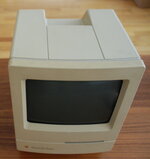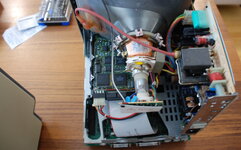I assume that the ram upgrade, if any were present, is simply pulled upward to get out right? and if any hdd was already there did that have to be removed first or not so much?
and does the logic board really just simply slide out of the rear 'tool less ly', a little alike to how it does so on the performa models?
just curious roughly how deep the two top t-15 screws are in?
not sure if I may have to find something else (may be able to borrow it from a particular torxs-happy workshop but will see soon)
is the checkers-like crt capacitor pattern one of these 'either it has it or it does not have it' or do some systems actually show it for a while but then it seem to be normal afterward tho? just wanted to know what to expect (the ad photo showed the question mark icon without any visible screen issue but it may or may not be as well as a different story for me soon)
and does the logic board really just simply slide out of the rear 'tool less ly', a little alike to how it does so on the performa models?
just curious roughly how deep the two top t-15 screws are in?
not sure if I may have to find something else (may be able to borrow it from a particular torxs-happy workshop but will see soon)
is the checkers-like crt capacitor pattern one of these 'either it has it or it does not have it' or do some systems actually show it for a while but then it seem to be normal afterward tho? just wanted to know what to expect (the ad photo showed the question mark icon without any visible screen issue but it may or may not be as well as a different story for me soon)



